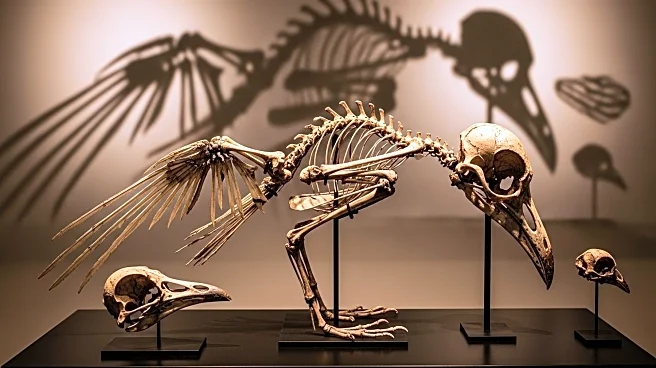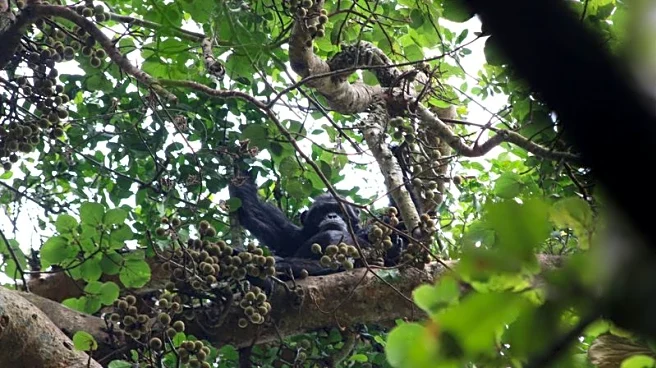What is the story about?
What's Happening?
A new study has revealed that the ancestors of giant flightless birds like ostriches and emus were likely capable of flying long distances. Researchers, led by Klara Widrig from the Smithsonian National Museum of Natural History, analyzed fossils of the ancient paleognath Lithornis promiscuous. The study, published in Biology Letters, used a three-dimensional geometric dataset to compare the sternum shape of L. promiscuous with living birds, suggesting it could handle a range of flight styles. This finding challenges previous theories about how these birds reached distant landmasses.
Why It's Important?
The study provides new insights into the evolutionary history of paleognaths, a group of large, flightless birds. Understanding their flight capabilities helps explain how these birds dispersed across continents, contributing to the broader knowledge of avian evolution and biogeography. This research could influence future studies on the adaptation and survival strategies of birds, offering a deeper understanding of how species evolve in response to environmental changes.
Beyond the Headlines
The findings highlight a case of convergent evolution, where different species independently evolve similar traits. This underscores the adaptability of species in response to environmental pressures, offering a glimpse into the evolutionary mechanisms that drive biodiversity. The study also raises questions about the role of flight in the survival and distribution of ancient bird species, potentially influencing conservation strategies for modern avian species.
AI Generated Content
Do you find this article useful?














